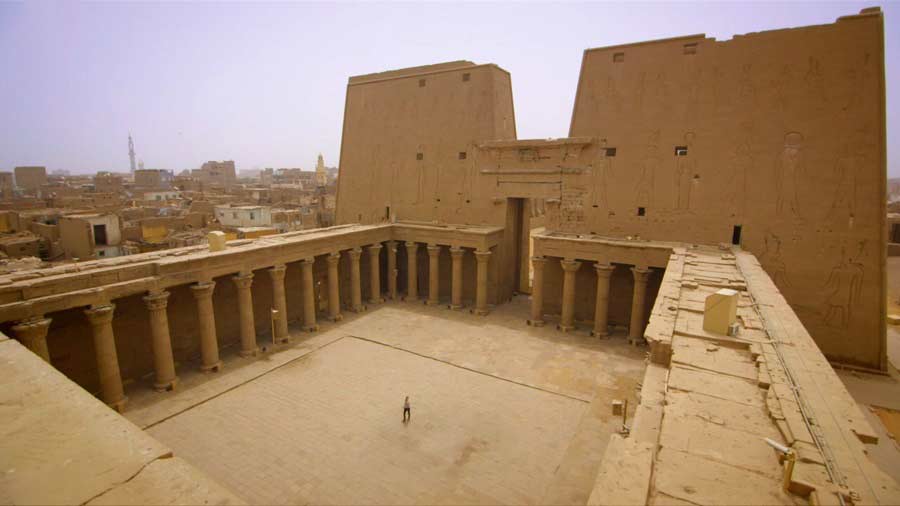Treasures of Ancient Egypt episode 3 – A New Dawn: Alastair Sooke concludes the epic story of Egyptian art by looking at how, despite political decline, the final era of the Egyptian Empire saw its art enjoy revival and rebirth.
From the colossal statues of Rameses II that proclaimed the pharaoh’s power to the final flourishes under Queen Cleopatra, Sooke discovers that the subsequent invasions by foreign rulers, from the Nubians and Alexander the Great to the Romans, produced a new hybrid art full of surprise. He also unearths a seam of astonishing satirical work, produced by ordinary men, that continues to inspire Egypt’s graffiti artists today.
Treasures of Ancient Egypt episode 3 – A New Dawn
Statue of Ramesses II
The Statue of Ramesses II is a 3,200-year-old figure of Ramesses II, depicting him standing. It was discovered in 1820 by Giovanni Battista Caviglia at the Great Temple of Ptah near Memphis, Egypt. It is made from red granite.
The statue was found broken in six pieces and earlier attempts at restoration failed. In 1955, Egyptian Prime Minister Gamal Abdel Nasser moved it to the large Bab Al-Hadid square in Cairo that was then renamed Ramses Square. There the statue was restored to its full height of 11 meters and erected on a three-metre pedestal at the edge of a fountain. It was stabilized by iron bars inside the body.
Over time Ramses Square turned out to be an unsuitable location, as the statue was exposed to corrosive pollution and constant vibration from traffic and subways. The Egyptian government decided to relocate it to a more appropriate location in 2006. At a temporary site on the Giza Plateau it underwent restoration before being moved into the staircase close the entrance of the Grand Egyptian Museum (GEM) in Giza in 2018.
Cleopatra
Cleopatra VII Philopator was the last active ruler of the Ptolemaic Kingdom of Egypt, nominally survived as pharaoh by her son Caesarion. As a member of the Ptolemaic dynasty, she was a descendant of its founder Ptolemy I Soter, a Macedonian Greek general and companion of Alexander the Great. After the death of Cleopatra, Egypt became a province of the Roman Empire, marking the end of the Hellenistic period that had lasted since the reign of Alexander (336–323 BC). Her native language was Koine Greek, and she was the first Ptolemaic ruler to learn the Egyptian language.
In 58 BC, Cleopatra presumably accompanied her father Ptolemy XII during his exile to Rome after a revolt in Egypt, a Roman client state, allowed his daughter Berenice IV to claim the throne. Berenice was killed in 55 BC when the king returned to Egypt with Roman military assistance. When he died in 51 BC, the joint reign of Cleopatra and her brother Ptolemy XIII began.
A falling-out between them led to open civil war. After losing the 48 BC Battle of Pharsalus in Greece against his rival Julius Caesar (a Roman dictator and consul) in Caesar’s Civil War, the Roman statesman Pompey fled to Egypt, where Ptolemy had him killed while Caesar occupied Alexandria. Caesar had attempted to reconcile the siblings, but Ptolemy’s chief adviser Potheinos viewed Caesar’s terms as favoring Cleopatra, so his forces besieged her and Caesar at the palace.




